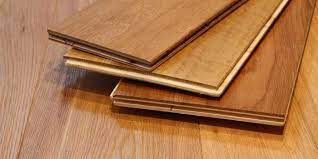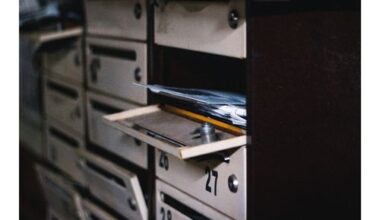Because of the numerous properties of manufactured wood, consumers choose it over solid wood for wood roofing, flooring, furniture, and wall sheathing. When you look for decent wood to create a door, you’ll find that manufactured wood provides the best options. In this article, we’ll learn what a manufactured wood is, what it’s made of, and what it’s used for.
What Is Manufactured Wood?
Manufactured wood is a type of wood that has been modified and improved by mixing and pressing different wood pieces together with other components such as glue and sawdust. The top layer of manufacturing wood is genuine wood that has been treated with melamine, and beneath that is a wood composite layer called Medium Density Fiberboard (MDF).
It is an umbrella term used by experts for a variety of different materials. It is also known as ‘Engineered Wood’ or ‘Composite Wood.’
What Is Manufactured Wood Made Of?
Manufactured wood is created by combining several components, such as sawdust and glue, with the particular application of heat and compression. It can also be made up of various wood pieces or wood sheets.
Manufacturers frequently create it from the same hardwoods and tie it together with glue or other ways of attachment. It enables them to have any thickness they desire in accordance with the precise design criteria required to meet national and international standards.
The Various Types of Manufactured Wood
#1. Particleboard
Particleboard, often known as chipboard, is made of sawdust.
It has a lower density and is less expensive than other produced wood boards on the market.
Because of its low-cost production, you’ll usually see this type of low-end furniture.
#2. Fiberboard
This board is medium in density and constructed of wood fibers.
Manufacturers soften the raw material by cooking it in pressurized steam, resulting in a fiber of uniform size.
This type of manufactured wood can be found in pianos and instruments.
#3. MDF (Medium Density Fiberboard) (MDF)
It has a medium-density as well, but it is more durable and stronger than standard fiberboard.
As a result, MDF boards are utilized to manufacture beautiful furniture such as dining tables and office tables, as they appear solid.
#4. Plywood
Plywood, also known as the laminated board, is constructed from thin layers or plies of wood that are glued together.
It is primarily manufactured as a flat sheet for a variety of structural, interior, and exterior purposes.
It is fire resistant and offers sound and thermal insulation.
#5. Veneer
This is a paper-thin woodcut that is pressed onto core panels for a variety of applications.
This form of produced wood is typically thinner than 1/8 of an inch. We frequently see it on doors, cabinet panels, and parquet floors.
What is Manufactured Wood Used For?
Manufactured wood has grown in popularity due to its superior quality to traditional wood varieties. Every sort of produced wood is easily paintable and stainable. They are good for holding nails. We can make them water-resistant and more robust by adding resins and glue.
Because of its high degree of customization, synthetic wood is the greatest substitute for the majority of natural wood kinds. They are inexpensive and have a high degree of use.
Manufactured wood is frequently used for,
- Roofing
- Flooring
- Making furniture
- Decking
Use of Manufactured Wood in Flooring
Although solid wood is the most popular option for wood flooring, synthetic wood also performs admirably for a lower cost. With certain modifications, manufactured wood is the trending wood for flooring, owing to the high cost of solid woods.
Manufactured wood offers excellent properties and a long lifespan. Because of the various layers of wood panels used and the placement in the crosswire direction, the strength of manufactured wood is also rather great, making it suitable for flooring.
Most importantly, prefabricated wood is simple to paint and stain. It requires little maintenance and lasts a long time.
Because manufactured wood is harder than genuine wood, it is more resistant to scratches and dents, which is important because floors are more prone to dents and scratches.
Manufactured wood is fantastic for flooring. However, you must use high-quality produced wood for this. Otherwise, the entire floor would be ruined owing to a problem with the flooring wood. So, when it comes to a vital use like flooring, always be sure to obtain high-quality produced wood from the market.
Because it is simple to paint and stain, inexpensive, ecologically friendly manufactured wood is an excellent choice for wood flooring.
Manufactured wood in the production of furniture.
Manufactured wood is almost universally relevant to all of the furniture we use on a daily basis. It can be used to construct chairs, desks, cupboards, beds, racks, sofas, drawers, and a variety of outdoor furniture.
Medium Density Fiberboard (MDF) and Plywood are the most commonly used manmade woods in furniture manufacturing.
Manufactured wood is a better choice for furniture than any other wood type due to its aesthetic appearance, workability, screwing and nailing ability, smoothness of the surface, and ease of painting.
Manufactured Wood Used in Decking
If you’re going to utilize manufactured wood for an outside purpose, such as decking, make sure it’s treated. For outdoor use, never use untreated manufactured wood. Manufactured wood does not withstand water well.
Moisture levels in the external environment can easily destroy the wood. Water molecules can easily enter constructed wood, causing the wood to decay. As a result, for decking and other outdoor uses, always choose treated manufactured wood.
What Is the Difference Between Manufactured and Solid Wood?
Manufactured woods are created by humans in order to maximize the benefits of solid wood properties for low-cost and low-end applications.
Because it has many of the same beneficial features as real wood, manufactured wood has become a serious competitor. Having said that, manufactured wood differs from solid wood in the following ways:
- Manufactured wood is less dense than solid wood.
- Manufactured wood cannot sand as many times as solid wood.
- Solid wood is more stable and durable than manufactured wood.
- Manufactured wood is less expensive than most solid wood.
- Solid wood is lighter than manufactured wood.
As you can see, produced wood is suitable for a wide range of applications, but you should always use high-quality grades.
Advantages of Manufactured Wood
#1. Manufactured wood is more fire-resistant.
When compared to untreated lumber, manufactured wood burns differently.
Layering in produced wood is to blame for this. The layers decrease the amount of oxygen that reaches the wood, slowing the burning process.
#2. Because it resembles real wood, it can be used as flooring.
Even the most adamant critics can be tricked by its appearance and assume that the floor is made of genuine wood.
The average length of produced wood can be longer than that of natural lumber.
As a result, it can be used for a variety of flooring styles in interior design.
For example, it provides an excellent choice for working on open floor layouts, which sometimes necessitate unusual lengths. Furthermore, this wood can be used for enormous decorative pieces.
It is available in a wide range of wood species, hues, and finishes.
It can also be made in a variety of thicknesses.
#3. In areas with a diverse and tough environment, manufactured wood does not expand or shrink like genuine wood.
The moisture level or the continual fluctuations in temperature have no effect on the quality of the product or cause any damage.
As a result, because they deal with a lot of moisture, manufactured wood is especially popular in the kitchen and bathroom.
#4. When compared to other types of wood, it is more flexible and pliable.
They are used by professional architectural designers for curves, walls, and other difficult design jobs.
Because of their strength and longevity, they meet practically all building codes.
Manufacturers of produced wood utilize a strong adhesive that joins the wood particles together.
This offers the lumber numerous unique properties, such as waterproofing, resistance to decay, insects, molds, and so on.
The layers and layers of plywood make it extremely strong and an excellent choice for both residential and commercial constructions.
#5. Manufactured wood is more sustainable
This is due to the fact that lumber companies are increasingly sourcing their supplies from renewable wood sources.
Furthermore, they make use of wood that would otherwise be burned or squandered.
Another significant advantage of artificial wood is that its top layers can be refinished if necessary.
Furthermore, a high-quality finish can keep lumber looking great for years.
Is Manufactured Wood Long-Lasting?
The thickness of the top determines the longevity of manufactured wood. It can last a lifetime if properly cared for.
Fortunately, there are five things you can do to keep it in good condition;
- Avoid abrasive grains from scratching the surface, as they might cause harm.
- Next, if you’re using a vacuum cleaner, make sure it’s set to bare floor mode.
- Keep mopping to a minimum for picking up dirt and debris. Instead, use a microfiber cloth to capture dirt and dust.
- Mats and carpets should only be used in entranceways because they are a major source of pebbles, dirt, dampness, and sand grains.
- Finally, avoid wearing high-heeled shoes on manufactured wood flooring because they damage the upper layer of the floor.
How do you clean manufactured wood floors?
Manufactured Wood’s top layer is soft and thin. That is why it is critical to keep certain things in mind while cleaning. You’ll destroy the floor if you don’t.
To remove dust and stains, use a vacuum cleaner, soft bristle broom, dust mop, or microfiber mop.
Always use a high-quality cleaner that will not damage the luster of the produced wood floor layers.
Wet your mop and sweep it across the floor slowly. You can use a small amount of vinegar and water, such as white vinegar in lukewarm water (1 cup per 2 gallons of water). It is completely safe for your Manufactured Wood flooring.
Keep furniture legs and pet nails off your floor. Allow no filth to collect and remove it as quickly as possible.
Is Manufactured Wood Resistant to Water?
No, nothing built of wood is completely watertight. Engineered wood products, on the other hand, perform far better in dampness than solid hardwood.
Is Manufactured Wood Harmful?
Manufactured wood is, indeed, hazardous. It contains formaldehyde, a carcinogen. They are poisonous and have the potential to deplete the ozone layer. This is why some people advise against using synthetic wood in the home.
They also include significant levels of harmful VOCs (volatile organic compounds) such as acetone, ethanol, and propanol. These chemicals, which are extremely harmful to our health and the environment, tend to leach from the wood surface after a few years of production.
Manufactured wood cannot be recycled, and MDF and other manufactured wood wastes are disposed of in landfills, causing numerous environmental difficulties. When they are burned, all of the chemicals and other toxic substances are released into the environment, causing pollution.
Is Manufactured Wood The Same As Particle Board?
There is a significant difference between particle board and manufactured wood. Manufactured wood is made of actual wood, whereas particle board contains no wood at all. They name it particle board to sound like it contains wood, but it does not.
Why Are Manufactured Boards Cheaper Than Wood?
Typically, manufactured boards are formed from wood scraps and adhesive. They are frequently veneered to make them more aesthetically pleasing. This makes them inexpensive to purchase.
Can Manufactured Wood Get Wet?
When exposed to moisture for a short period of time, manufactured wood products are relatively durable. The negative impacts of floods can be avoided, but only if the moisture is evacuated soon.
Can You Seal Manufactured Wood?
Most manufactured wood is pre-finished and does not require sealing. You can, however, put a seal on engineered wood to offer an extra layer of protection against water leaks and spills.
In Conclusion,
There are some pieces of wood available today that are a hybrid of solid wood and manufactured wood. This is done so that purchasers can obtain a high-quality piece of wood for a fraction of the cost.
Office desks, for example, are often made of a blend of solid wood and manufactured wood. In this article, we have outlined the various applications of manufactured wood, including its benefits.
Frequently Asked Questions
Is manufactured wood good?
Manufactured wood offers excellent properties and a long lifespan. Because of the various layers of wood panels used and the placement in the crosswire direction, the strength of manufactured wood is also rather great, making it suitable for flooring.
Can you sand manufactured wood?
You can sand most manufactured wood floors. The thickness of the surface layer will determine how deep you can sand the hardwood floors






